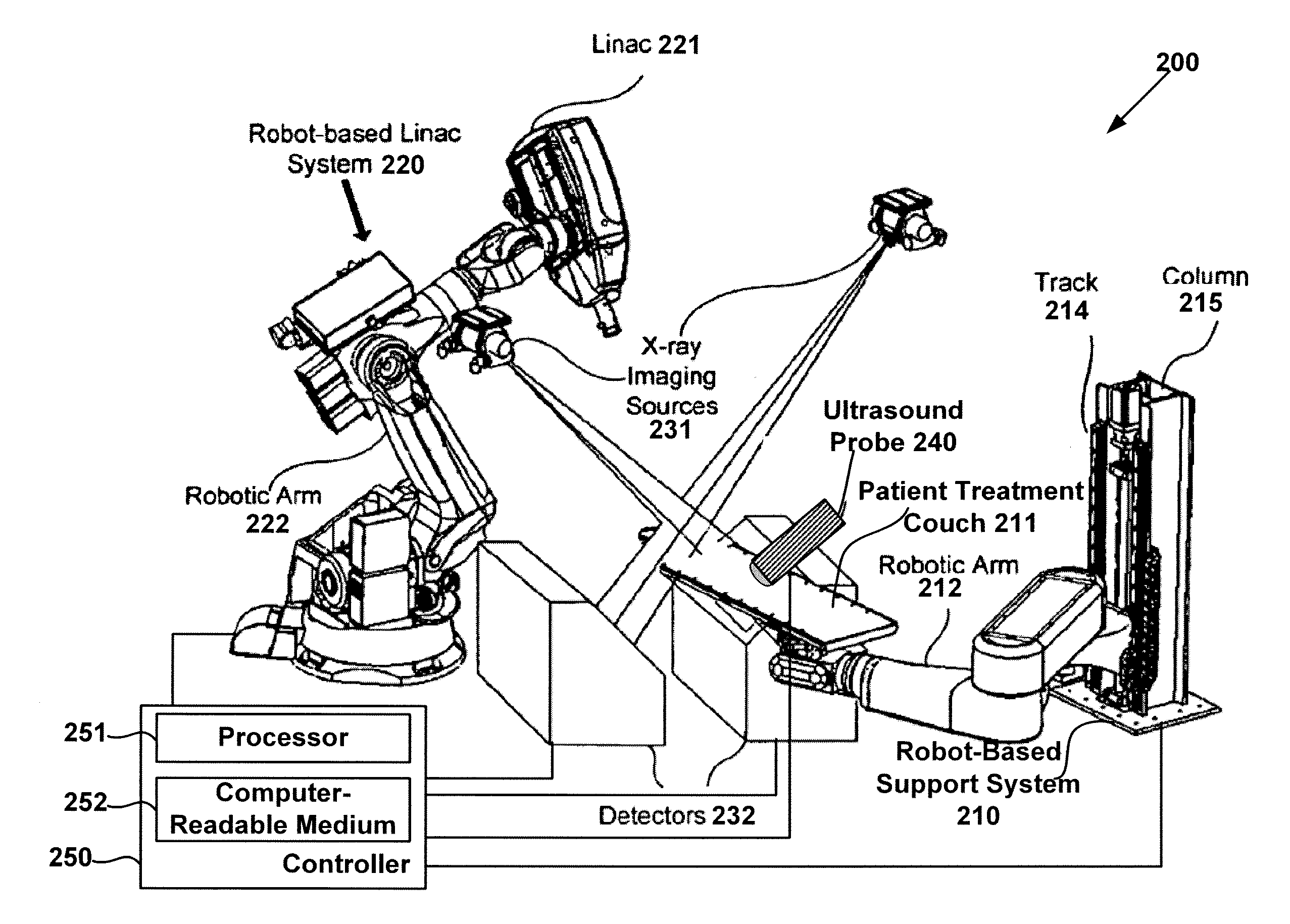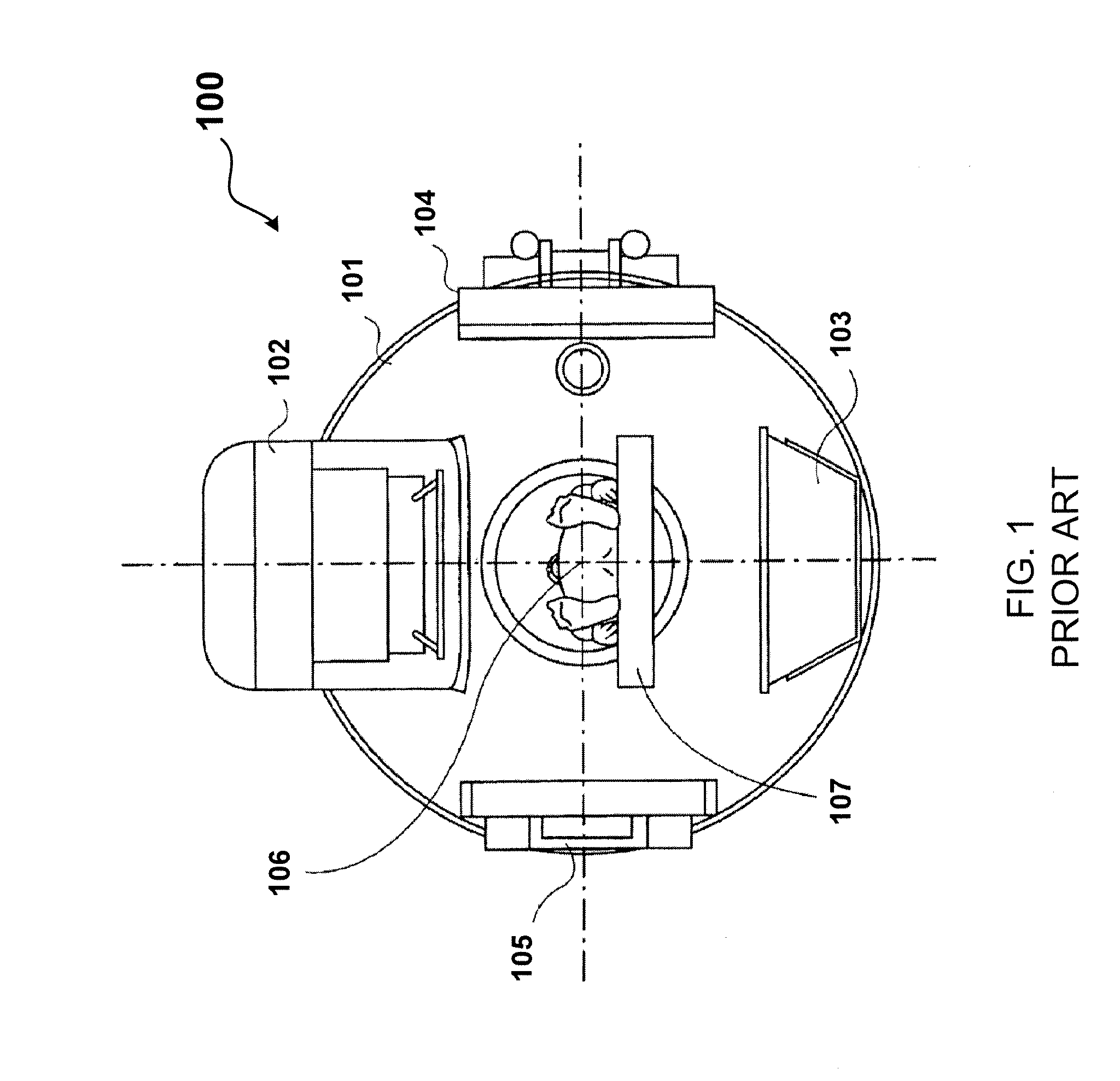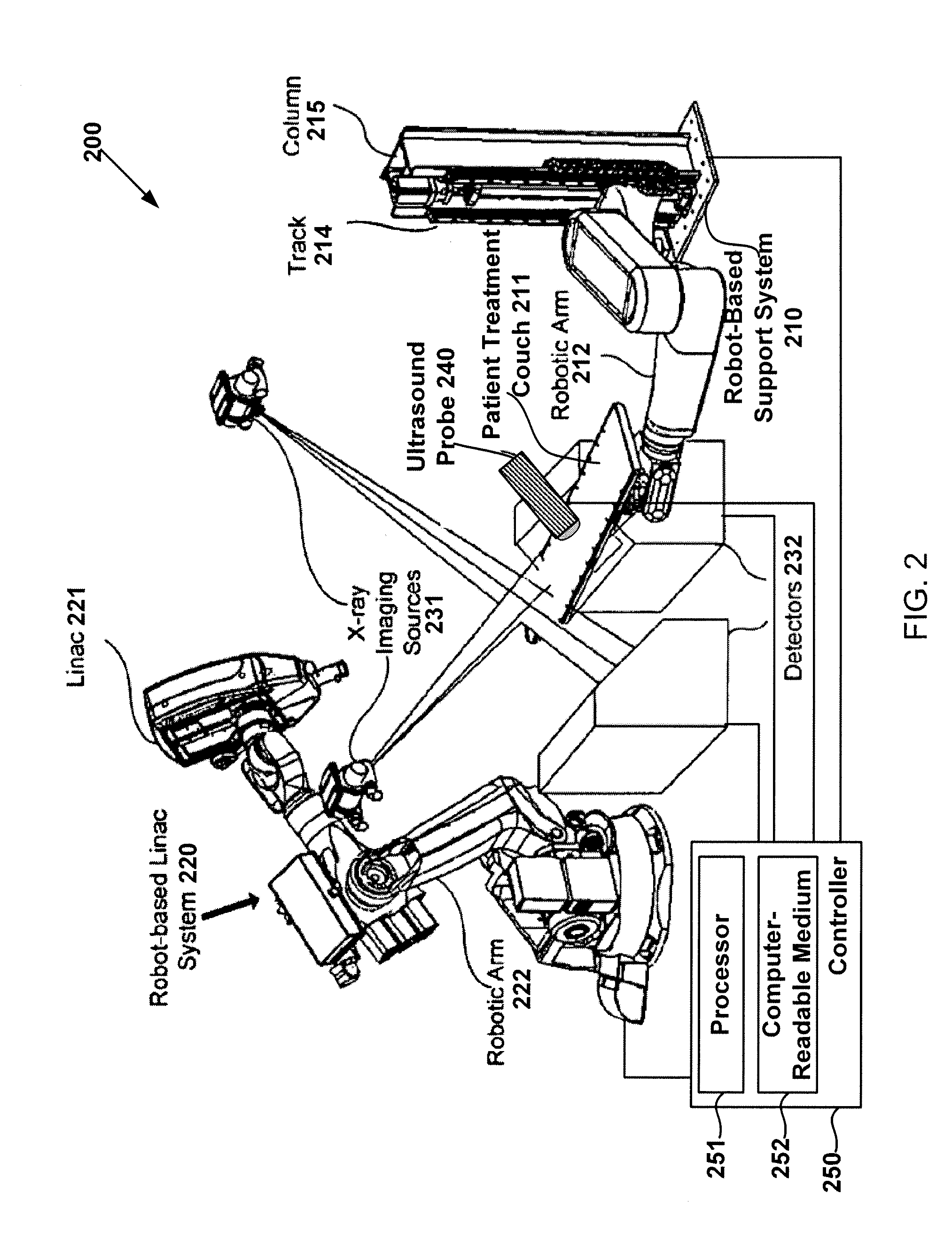Systems and Methods for Real-Time Tumor Tracking During Radiation Treatment Using Ultrasound Imaging
- Summary
- Abstract
- Description
- Claims
- Application Information
AI Technical Summary
Benefits of technology
Problems solved by technology
Method used
Image
Examples
example
[0082]In one example, a radio-surgical procedure uses intrafractional ultrasound images to track movement of an anatomy of interest within a patient using system 200 of FIG. 2. The anatomy of interest may correspond to a target volume, e.g., a lesion, for irradiation by LINAC 221 or a structure within the patient that is fixed relative to the lesion. Prior to the procedure, a 3D planning image of the anatomy of interest patent is obtained using, e.g., a CT, MRI or other suitable imaging equipment. The 3D planning image is used by a physician to plan the procedure. After a treatment plan is developed, the planning image and treatment plan are accessible to controller 250 through the computer-readable medium 252.
[0083]The patient is placed on treatment couch 211 and aligned roughly with the reference frame adopted for the planning image, e.g., the geometric center of the lesion. Next, a transformation between the treatment room reference frame (the second reference frame) and the plan...
PUM
 Login to View More
Login to View More Abstract
Description
Claims
Application Information
 Login to View More
Login to View More - R&D
- Intellectual Property
- Life Sciences
- Materials
- Tech Scout
- Unparalleled Data Quality
- Higher Quality Content
- 60% Fewer Hallucinations
Browse by: Latest US Patents, China's latest patents, Technical Efficacy Thesaurus, Application Domain, Technology Topic, Popular Technical Reports.
© 2025 PatSnap. All rights reserved.Legal|Privacy policy|Modern Slavery Act Transparency Statement|Sitemap|About US| Contact US: help@patsnap.com



